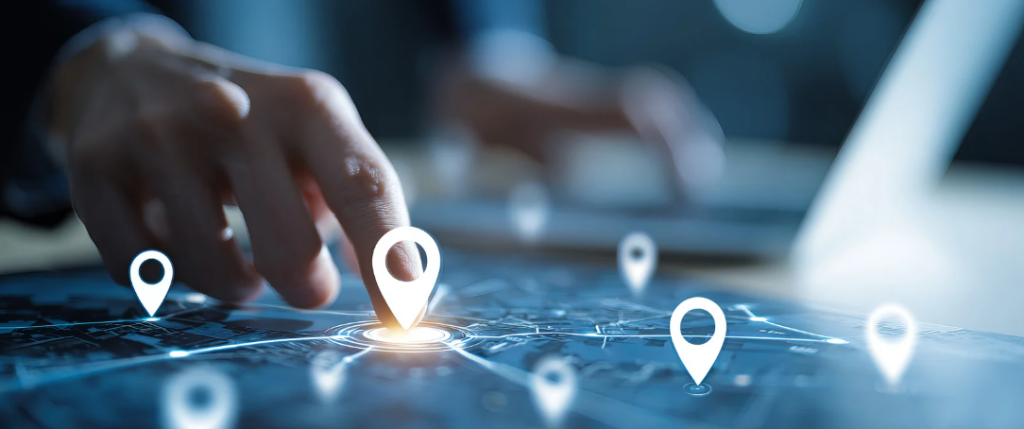
When most people think about infrastructure, they most likely imagine just the finished product: a new residential tower, a busy commuter bridge, or a bustling street full of retail shops. Many don’t realize how much detailed planning goes into the creation of each of these structures and projects— or how deeply their success depends on accurate and reliable data to ensure these proposed designs are functional and safe for everyday citizens to rely on and enjoy.
Over the years, digital scanning and measuring technologies have become indispensable tools in the work of civil engineers, architects, and designers, empowering them to gather precise information in a fraction of the time it would take using traditional methods. Tools like LiDAR, building information modeling, and digital twins are now at the forefront of helping design and build the smart, sustainable cities of the future. Let’s explore why digital measurement services are more important than ever and how Planit helps you leverage them to their fullest potential.
LiDAR, BIM, and the Future of Smart Cities
As populations continue to grow, so does the need for smarter, more efficient infrastructure in their cities. Architects and engineers have turned to advanced digital mapping and measuring technologies to meet the demands of this rapid growth, while services like Planit Engineering have stepped up to ensure civil infrastructure is as safe, durable, and sustainable as possible. Some of our core services include cutting-edge digital mapping and measurement to guarantee the most innovative solutions for urban development, from shopping malls to retirement homes.

LiDAR Scanning and Mapping
LiDAR (Light Detection and Ranging) technology uses laser pulses to scan and create detailed 3D models of environments. This tool captures highly accurate dimensions of buildings, terrain, and other structures in both indoor and outdoor settings. Architects and engineers use LiDAR to gather precise spatial data that helps visualize projects in a way that wasn’t possible before.
This technology is especially invaluable for planning future developments by mapping existing structures and spaces, especially in areas that are hard to access, cover vast areas, or require fine-tuned measurements. With LiDAR, precision is key, as even slight variations in the data it captures and maps translate to measurements that can have significant consequences down the line when building infrastructure like bridges or buildings.
Building Information Modeling Services
Building information modeling (BIM) is another essential digital tool for civil engineers and architects. This technology enables the creation of detailed, interactive 3D models of buildings and infrastructure projects. Unlike traditional blueprints, which could only provide a flat, two-dimensional view, BIM allows professionals to visualize how a project will function in real-world applications and predict overall longevity before construction even begins.
By integrating data from digital surveys and even historical information uploaded and digitized from paper documentation, architects can identify potential issues early in the design phase, such as spatial constraints, material conflicts, or safety risks from in-place utilities. Leveraging building information modeling services guarantees that designs are more accurate and efficient, which leads to faster, more cost-effective project completions with fewer health and safety risks.
Digital Twins, A Virtual Replica of the Real World
Building upon the power of building information modeling, a digital twin offers a highly detailed virtual model of a physical space. These digital replicas not only represent the structure of a city or building, as with BIM, but also simulate how it operates through a variety of scenarios. With data from sensors and digital measurements, engineers can monitor a project’s performance, identify areas of improvement, and predict maintenance needs long before they’re a problem.
Digital twinning technology is quickly revolutionizing how cities and infrastructure are managed, allowing civil engineers and managers a more straightforward path toward energy-efficient, sustainable, and resilient urban development. As we move toward creating more intentional and innovative cities, digital twins will play a critical role in optimizing how we are able to interact with the built environments around us and predicting their lifecycle for more deliberate spaces.

Call Planit Today to Start Leveraging Digital Measurement Tools in Your Projects
As global growth and development continue at an unprecedented pace, the importance of digital measurement servicescannot be overstated. LiDAR, BIM, and digital twins are a few examples of how technology is changing the way urban planners approach their work. By providing precise data and detailed 3D models, these tools allow professionals to create more intentional, sustainable infrastructure that can meet the challenges and demands of today—and tomorrow.
For civil architects and engineers, digital mapping services are essential in making informed decisions that contribute to the creation of stable, resilient, and adaptable cities. As we look to the future, technologies and services like those offered by Planit Engineering will be at the core of the next generation of smart infrastructure, guiding the way to more efficient, sustainable cities. Visit our website or contact our team today to learn more about how Planit’s digital mapping and measuring services can improve your project’s stability and success, regardless of size or scope.

